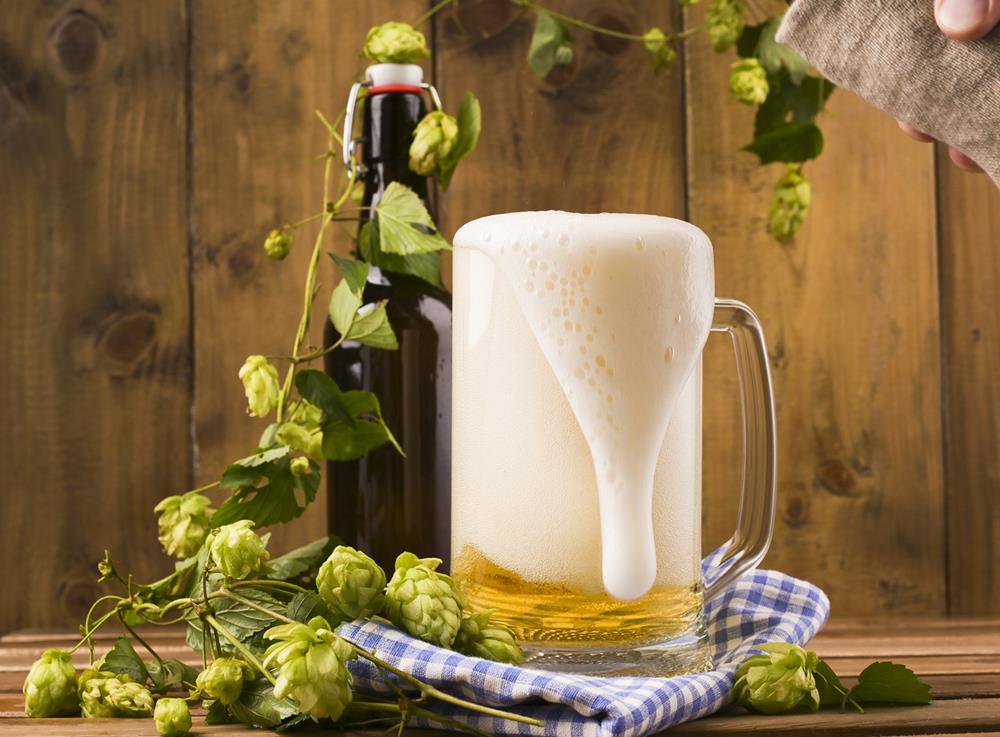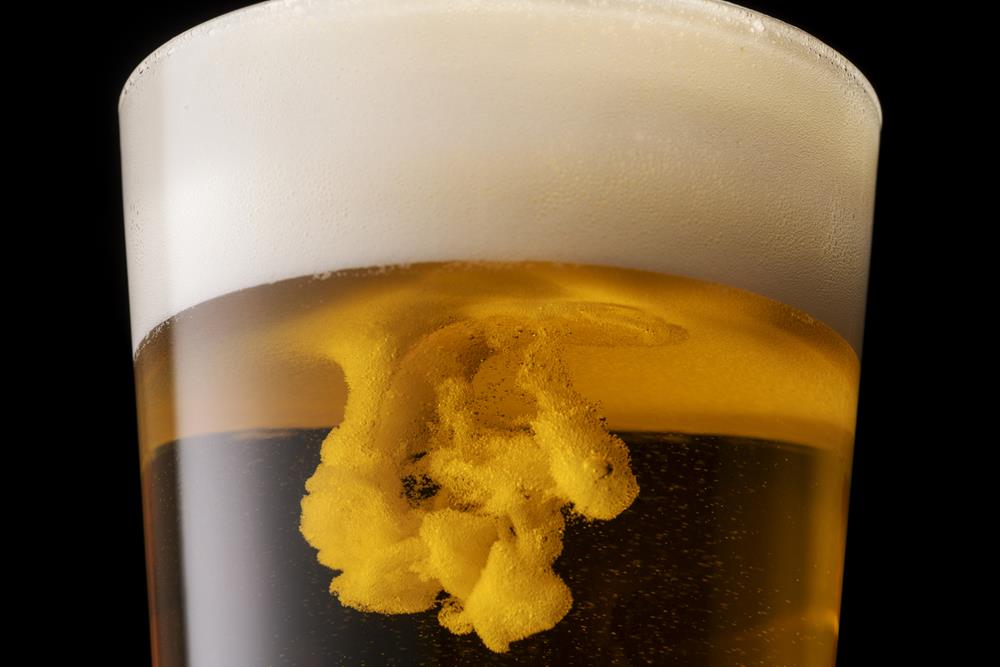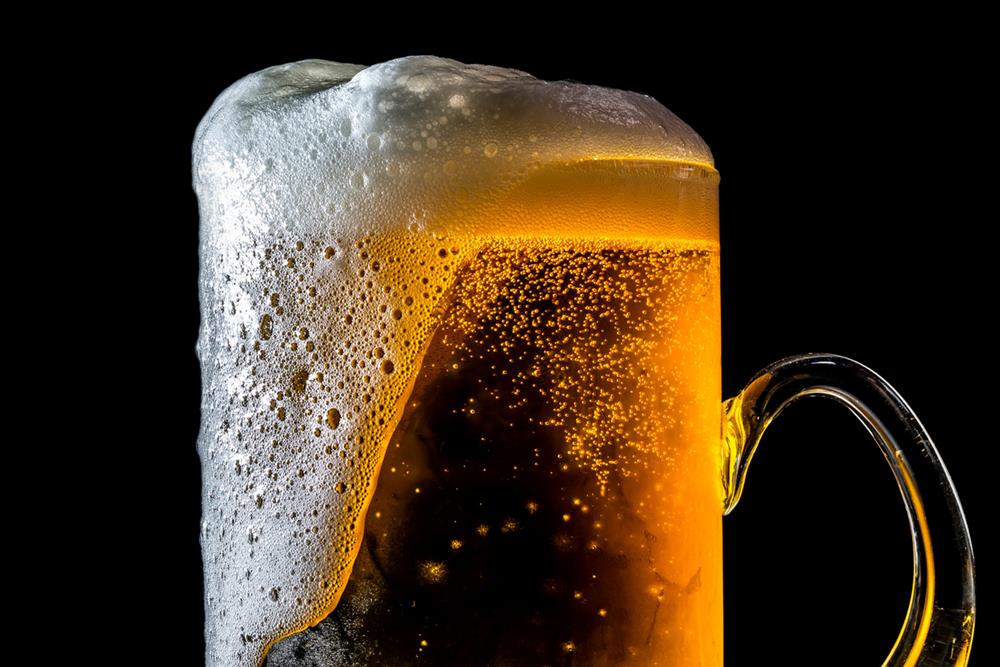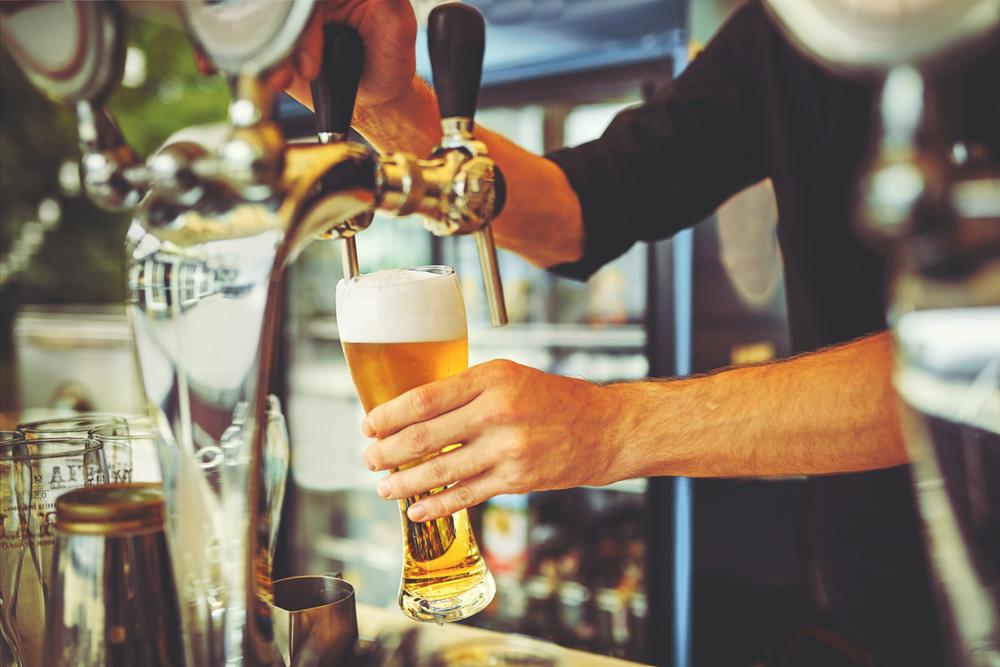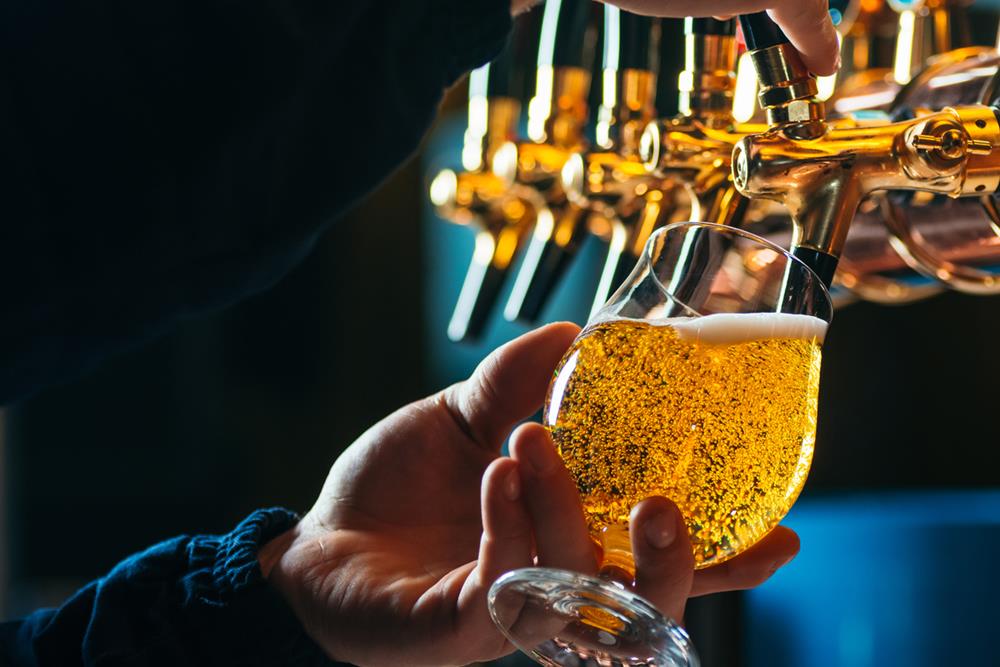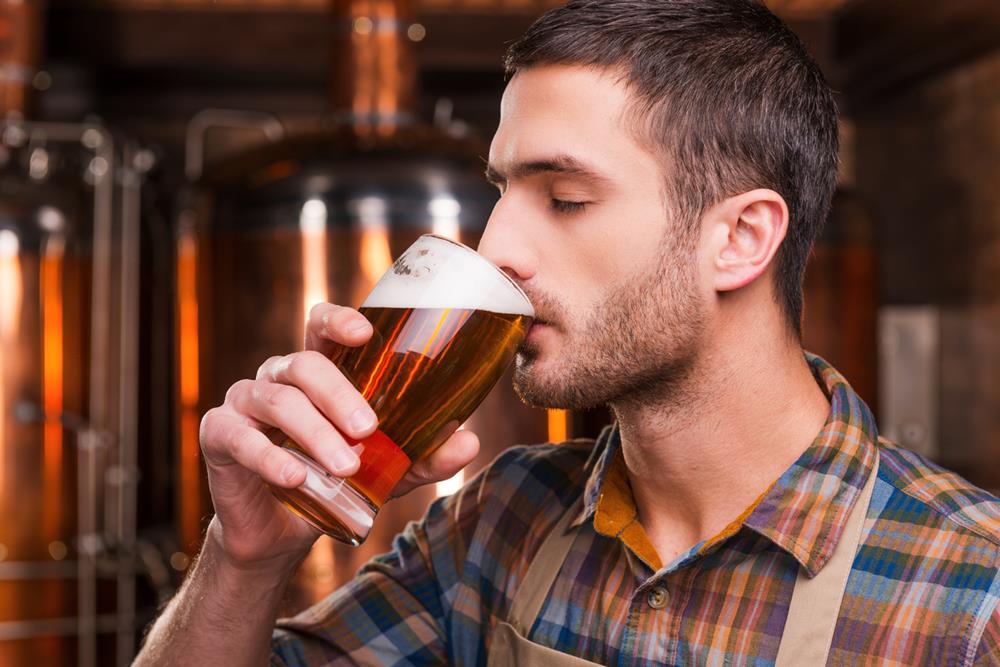Beer, one of the world’s oldest and most cherished beverages, offers more than just a refreshing taste. A pivotal aspect of its allure lies in the frothy crown that tops our glasses – the beer foam. This foam is not just a visual delight; it plays a crucial role in enhancing the beer’s aroma and overall flavor profile.
In this article, we will discuss the fascinating interplay of chemistry and physics that gives rise to beer’s bubbly hat. Join us as we explore the intricate science behind beer foam, shedding light on why it’s more than just a frothy garnish but a key player in the beer-tasting experience.
The Basics of Beer Foam
What is Beer Foam?
Beer foam, often referred to as the head of the beer, is the frothy layer that forms at the top of the beer when it’s poured into a glass. This foam is not only visually appealing, but it also serves as a medium that enhances the beer’s aroma and flavor. The formation of foam is a complex process that involves carbonation, the release of gas from the liquid, and the interaction of beer’s ingredients.
Formation of Foam
The foam is primarily formed by carbon dioxide (CO2), which is either produced naturally through fermentation or added artificially during the beer’s packaging process. When beer is poured, the CO2 gas escapes from the liquid, forming bubbles that rise to the surface and create foam. The process involves several factors:
- Carbonation Level: The amount of CO2 dissolved in the beer significantly affects foam formation. Higher carbonation typically results in more foam.
- Pouring Technique: The way beer is poured into the glass can influence the amount and stability of the foam. A gentle pour along the side of the glass creates less foam, while a more direct pour into the center generates a thicker head.
- Glass Cleanliness: Any residue or oils in the glass can hinder foam formation, emphasizing the importance of using a clean glass for beer.
Importance of Foam
The foam on a beer is not just for show; it has several roles that contribute to the overall drinking experience:
- Aroma Release: Foam traps the volatile compounds responsible for beer’s aroma, allowing them to be released as the foam dissipates, enhancing the sensory experience.
- Flavor Enhancement: The texture and presence of foam can influence the perception of taste, making the beer feel smoother or richer on the palate.
- Visual Appeal: A good head on a beer is often seen as a sign of quality and craftsmanship, adding to the aesthetic enjoyment of the drink.
The foam’s ability to enhance aroma, flavor, and appearance underlines its importance in the brewing world, making it a critical aspect of the beer experience.
Chemistry Behind the Foam
The frothy head that sits atop your beer is more than just an aesthetic feature; it is a marvel of chemistry at work. Delving into the chemistry behind the foam unveils a complex interaction between proteins, hop acids, and other compounds, all playing pivotal roles in foam formation and stability.
The Role of Proteins
Proteins in beer, primarily derived from malted barley, are fundamental to foam formation. These proteins contain hydrophobic (water-repelling) and hydrophilic (water-attracting) segments, enabling them to act as surfactants that reduce the surface tension of the liquid, allowing bubbles to form more easily. Once the bubbles are formed, the proteins help stabilize the foam by forming a flexible film at the bubble interface. This balance between foam creation and stabilization is crucial; too little protein, and the foam collapses quickly; too much, and the foam can become too thick and persist longer than desired.
Impact of Hop Acids
Hops, the flowers used in brewing beer for flavor and aroma, also contribute significantly to the quality of beer foam. Hop acids, specifically iso-alpha acids produced during the boiling phase of brewing, enhance foam stability. They do this by strengthening the protein films at the bubble surfaces, making the foam more resistant to dissipation. The amount and type of hops used in brewing can, therefore, have a pronounced effect on the character of the beer’s foam.
Alcohol Content’s Effect
Alcohol plays a dual role in the behavior of beer foam. While it is a byproduct of fermentation and essential for beer’s character, alcohol can both support and hinder foam formation. Alcohol can reduce surface tension, which aids in the initial formation of bubbles. However, higher alcohol concentrations can destabilize foam by disrupting the protein structures that stabilize the bubbles, leading to quicker dissipation of the foam.
The Interplay of Carbonation
Carbonation, though more related to the physics of foam formation, also has a chemical aspect. The CO2 gas that forms the bubbles in the foam comes from the fermentation process, where yeast converts sugars into alcohol and carbon dioxide. The dissolved CO2 in beer becomes less soluble as the beer warms up or is agitated (such as when being poured), leading to the formation of bubbles that rise to the surface to form foam.
Physics at Play
The delightful foam that crowns a freshly poured beer is not just a chemical wonder—it’s also a showcase of physics in action. Understanding the physics behind beer foam requires delving into the principles of gas laws, surface tension, and bubble dynamics, which together create this fascinating phenomenon.
The Role of Gas Laws
The formation and behavior of beer foam are deeply influenced by gas laws, particularly Henry’s Law, which describes the solubility of gases in liquids. According to Henry’s Law, the amount of dissolved gas in a liquid is proportional to the pressure of the gas above the liquid. When a beer is opened and poured, the pressure above the liquid decreases, leading to the release of carbon dioxide (CO2) from the solution. This release of CO2 forms bubbles that rise to the surface, creating foam. The temperature of the beer also plays a crucial role; warmer beer releases CO2 more readily than colder beer, affecting the size and longevity of the foam head.
Surface Tension and Its Importance
Surface tension is another critical factor in foam formation. It refers to the cohesive force at the surface of a liquid that makes it behave like a stretched elastic membrane. Surfactants, such as the proteins found in beer, reduce surface tension, allowing bubbles to form more easily. Once formed, the liquid’s surface tension tries to minimize the surface area of the bubbles, leading to spherical shapes. The proteins and hop acids in beer work to stabilize these bubbles by forming a protective film around them, preventing the bubbles from merging with each other too quickly and collapsing the foam.
Dynamics of Bubble Formation and Collapse
The life cycle of a bubble in beer foam involves its formation, rise through the liquid, and eventual bursting at the surface. This process is governed by the buoyancy of the bubbles and the viscosity of the beer. Bubbles rise to the surface because they are less dense than the surrounding liquid. As they ascend, they gather other bubbles, growing in size. Upon reaching the surface, the bubbles create foam.
Over time, the liquid within the walls of the bubbles drains under gravity, thinning the walls until they can no longer sustain the internal pressure and burst. This drainage is influenced by the beer’s viscosity; thicker (more viscous) beers tend to have longer-lasting foam because the liquid drains more slowly.
The physics behind beer foam reveals a complex interplay of forces and properties that govern its formation, stability, and dissipation. From the moment CO2 begins to escape from the liquid, forming bubbles, to the intricate dance of surface tension and bubble dynamics, each step is proof of the fascinating science that brings us the simple pleasure of a beer’s foam.
Factors Influencing Foam Quality
The quality of beer foam can significantly enhance the drinking experience, serving as an indicator of the beer’s overall character and craftsmanship. However, foam quality is not solely determined by the brewing process; it is also influenced by a variety of external factors ranging from glassware to serving temperature. Understanding these factors can help brewers and enthusiasts alike optimize the presentation and enjoyment of beer.
Glassware
- Shape and Cleanliness: The shape of the glass can influence the formation and retention of foam. Glasses designed with a narrow base and a wider top, for example, promote better foam formation. Cleanliness is equally critical; residues of detergents or oils can impede foam formation and stability by breaking down the surface tension necessary for sustaining bubbles.
- Nucleation Sites: Some glasses come etched with nucleation points at the base, which encourage the consistent formation of bubbles, leading to a more stable head of foam.
Pouring Technique
- Angle and Height: The technique used to pour beer can greatly affect its foam. Pouring the beer against the side of the glass at an angle reduces foam, while pouring directly into the bottom from a height increases aeration, leading to more foam.
- Controlled Agitation: Gentle agitation by swirling the beer in the glass can also enhance foam quality by releasing carbon dioxide, but excessive agitation may result in too much foam or quick dissipation.
Temperature
The temperature at which beer is served impacts foam formation. Too cold, and the carbon dioxide remains too solubilized to form ample foam; too warm, and the beer may produce an excessive, quickly dissipating head. Each beer style has an optimal serving temperature that balances these effects to create the ideal foam quality.
Beer Composition
- Carbonation Level: The amount of dissolved carbon dioxide directly affects the potential for foam formation. Beers with higher carbonation levels generally produce more foam.
- Ingredients: The types and qualities of ingredients, especially proteins from malt and hops, play a significant role in foam stability and texture. Variations in the brewing process and ingredient selection can lead to differences in foam characteristics among beers.
Age and Storage Conditions
- Freshness: Over time, the quality of beer foam can deteriorate. Aging can affect the concentrations and conditions of the proteins and other compounds essential for stable foam.
- Storage: Improper storage, such as exposure to high temperatures or sunlight, can degrade the beer’s quality, including its ability to produce and maintain a good head of foam.
The foam atop a beer is not merely a decorative touch but a complex feature influenced by a myriad of factors. From the cleanliness and shape of the glassware to the beer’s temperature, composition, and even how it’s poured, each element plays a critical role in the quality of the foam.
The Art of Pouring
Pouring a beer might seem straightforward, but the art of pouring is a nuanced skill that can significantly affect a beer’s presentation, aroma, and taste. A proper pour can enhance the beer’s best qualities, including the formation of an ideal head of foam that releases the beer’s aromatic compounds and contributes to its overall flavor and mouthfeel. Here’s how the art of pouring plays a pivotal role in the beer-drinking experience.
Techniques for the Perfect Pour
- Angle and Speed: Begin by tilting the glass at a 45-degree angle and pouring the beer slowly along the side. When the glass is half-full, straighten it and continue to pour directly into the center. This method encourages the right amount of foam without over-aerating the beer.
- Controlling Foam: The goal is to achieve about an inch of foam. This is crucial because the foam captures and concentrates the beer’s aroma, providing a more intense olfactory experience before the first sip. Adjust the pour speed and the height from which you pour to control the foam’s thickness.
Cultural Significance
- Regional Preferences: The art of pouring varies significantly around the world and is influenced by regional preferences and traditions. For example, in Belgium, a careful pour that respects the beer’s character is a sign of respect for the brewer’s craft. In contrast, the Czech Republic values a pour that results in three distinct layers of foam, each contributing differently to the beer’s flavor and texture.
- Ritual and Presentation: The pouring process can also be a ritual that adds to the enjoyment of the beer. The visual appeal of a well-poured beer, with its clear body and creamy head of foam, sets the stage for the drinking experience.
The Role of Equipment
- Glassware: Different styles of beer benefit from specific types of glasses, which are designed to enhance the beer’s aroma, flavor, and visual appeal. The shape of the glass can influence the beer’s contact with air, the development of the head, and the release of aromas.
- Pouring Devices: Some bars and breweries use specialized pouring devices that allow for precise control over the speed and angle of the pour, ensuring consistency and optimal presentation for each glass.
Importance in Beer Evaluation
In competitions and tastings, the pour is an essential aspect of beer evaluation. A beer that is poured well showcases the brewer’s skill in balancing carbonation, aroma, and flavor. The appearance of the beer, including its clarity, color, and foam, is evaluated as part of its overall quality.
The Role of Foam in Beer Evaluation
Beer evaluators, including judges at competitions and connoisseurs, pay close attention to the foam for insights into the beer’s overall character, brewing technique, and ingredient quality. Understanding how foam contributes to beer evaluation can deepen one’s appreciation for this complex beverage.
- Foam Stability: A beer’s foam stability, or how long the foam lasts before dissipating, can indicate the quality of the proteins and hops used in brewing. Stable foam often suggests high-quality ingredients and careful brewing processes.
- Foam Consistency: The texture of the foam, whether it is creamy, fluffy, or coarse, provides clues about the beer’s carbonation level and the types of malt and adjuncts used. A consistent, fine foam is typically a sign of a well-crafted beer.
- Carbonation Methods: The nature of the beer’s foam can reveal whether it was naturally carbonated through bottle conditioning or force-carbonated. Naturally carbonated beers often have smaller, more uniform bubbles, contributing to a smoother foam.
- Balance of Ingredients: The interaction between hops, malt, yeast, and water influences foam formation and stability. A beer with a well-balanced recipe and brewing process will exhibit a foam that complements its body and flavor profile.
- Aroma Release: Foam acts as a medium for aroma release. The act of breaking through the foam with each sip releases volatile compounds that contribute to the beer’s aroma, directly impacting the tasting experience.
- Texture and Mouthfeel: The presence of foam affects the beer’s mouthfeel, adding a textural dimension that can make the beer feel richer or lighter on the palate. Evaluators consider how the foam enhances or detracts from the overall drinking experience.
- Expectations by Beer Style: Different beer styles have varying expectations for foam characteristics. For example, a Belgian Witbier is expected to have a thick, creamy head, while a British Bitter might have a more subdued foam. Understanding these style-specific norms is crucial for accurate evaluation.
- Presentation and Appeal: The visual aspect of foam, including its color, stability, and how it clings to the glass (lacing), contributes to the beer’s overall appeal. A well-presented beer with attractive foam can enhance the drinker’s anticipation and enjoyment.
For beer evaluators, foam is a critical component of the sensory evaluation process, influencing judgments about the beer’s aroma, flavor, and mouthfeel. By appreciating the role of foam, enthusiasts and professionals alike can deepen their understanding and enjoyment of beer, recognizing the intricate balance of science and art that goes into every glass.
Conclusion
The science and art behind beer foam unveil a fascinating aspect of brewing that significantly enhances the drinking experience. From the chemistry of its formation to the physics maintaining its structure and the external factors influencing its quality, foam is more than just an aesthetic feature—it’s a sensory gateway that enriches the aroma, taste, and overall enjoyment of beer.
Understanding and appreciating the complexities of beer foam can deepen our appreciation for this beloved beverage, highlighting the meticulous craftsmanship that goes into each pour. Whether you’re a casual drinker or a beer aficionado, the next time you raise a glass, take a moment to savor the remarkable phenomenon that is beer foam.


